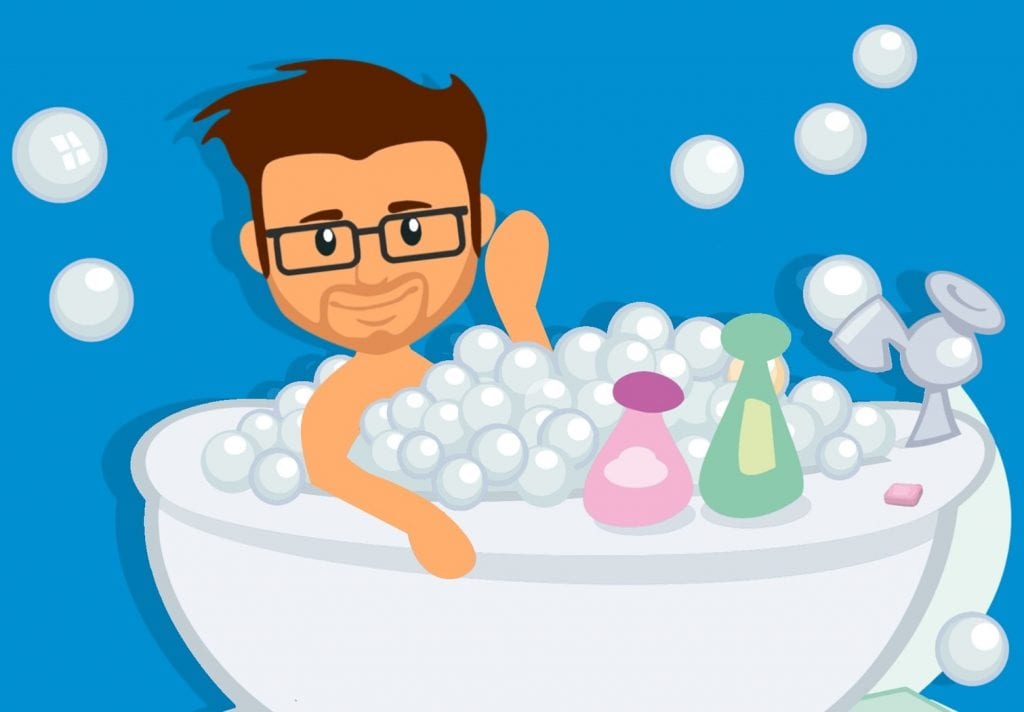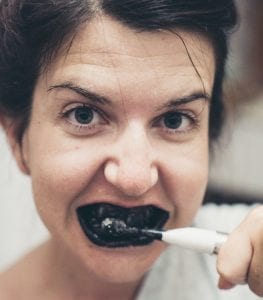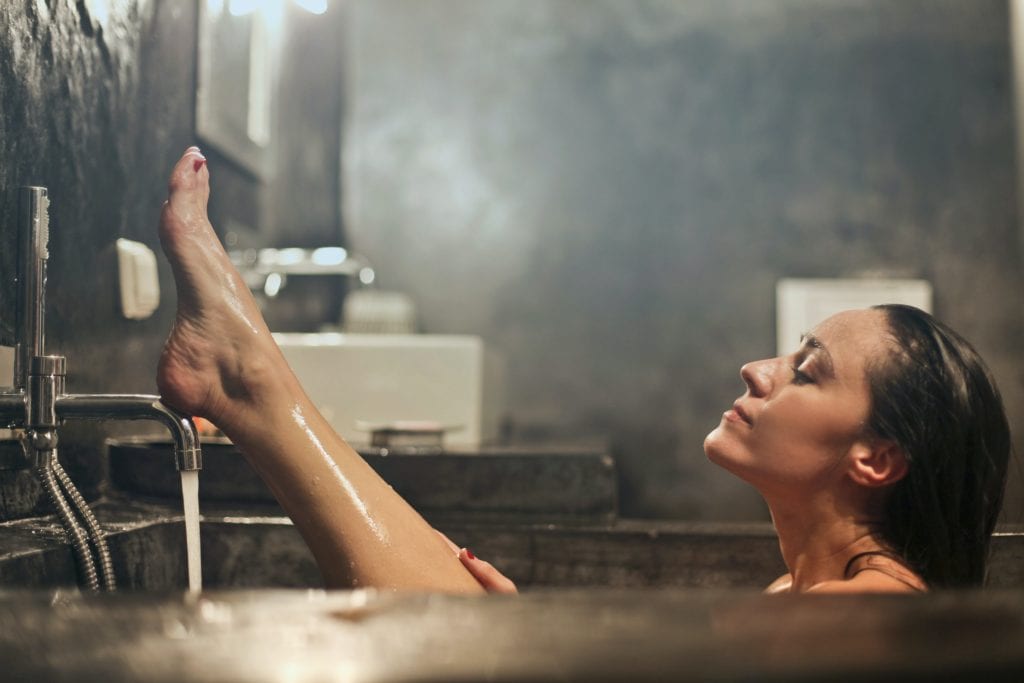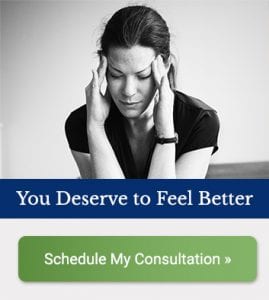As a southern girl, I don’t dare walk out of my house without my color on and hair done! However, for a long time I didn’t realize that I was dousing myself with toxins! The personal care products I was using each morning were hurting my health.
I’m not alone. The average woman uses 9-12 personal care products exposing her to 168+ unique ingredients. Think that is bad (you know I do!), will think about this: the average teen girl uses 17 products exposing her to 200 unique ingredients. That is a lot of chemical exposure day in and day out.
Toiletry Toxins Don’t Discriminate

But guys, don’t think you are safe because you don’t wear makeup! There are plenty of toxins in products you use as well. In this post, I’m not even going to cover makeup and perfumes, so you can safely read on!
According to the Cornucopia Institute, many of the chemicals in our personal care products such as toothpaste, soap, shampoo/conditioner, deodorant, and body lotion, are hormone disrupting and cancer-causing substances.
Shockingly, “the FDA does not require impurities, including several potential contaminants such as 1,4-dioxane or ethylene oxide, both carcinogens, to be listed as ingredients on the labels of personal care products because these toxic chemicals are produced during manufacturing,” reports Dr. Jerome Rigot, PhD policy analyst at The Cornucopia Institute.
Toxins in Toothpaste
 Let’s look at toothpaste. That’s a product that everyone in the family uses. In fact, the average American uses 20 gallons of toothpaste over the course of their life!
Let’s look at toothpaste. That’s a product that everyone in the family uses. In fact, the average American uses 20 gallons of toothpaste over the course of their life!
“If you diligently brush your teeth the recommended two or more times per day, you’ll likely skip out of the dentist’s office cavity-free. But, unfortunately, your pearly whites might be sparkling at a cost to both you and the environment. Many of the big-brand toothpastes lining drugstore shelves contain some nasty and potentially harmful ingredients. We’re not saying you should stop brushing your teeth or give up on toothpaste—but you should start reading the labels. Memorize these four ingredients, and keep them out of your medicine cabinet for worry-free brushing.”
Typical toxins in toothpaste include
- Triclosan, an antiseptic additive. it’s almost certainly an endocrine disruptor, similar to BPA, and may contribute to bacterial resistance to antibiotics. And “a study by the University of California, San Diego School of Medicine that found a link between triclosan and liver fibrosis and cancer in mice. Plus, a new study suggests the additive could cause people to develop allergies to certain foods, especially peanuts.”
- FD&C Blue 1 (color additives), “Environmental Working Group says that FD&C Blue 1 is a synthetic dye produced from petroleum, which can accumulate in the body over time. Scientists aren’t sure what risks this particular colorant poses, but food dyes in general are potentially linked to allergies, ADHD, and cancer, according to the Center for Science in the Public Interest, a nonprofit watchdog group that put together a comprehensive report of all the available scientific research on food colorings. They found that the data on Blue 1 was especially thin and much of what was available was industry-commissioned”
- Sodium Lauryl Sulfate (SLS) is what makes toothpaste sudsy. While it is debated whether or not this is actually a carcinogen (Prevention says it is not) but they do note it can cause canker sores. “Studies have found that SLS may bring them on because it can irritate the soft tissue in the mouth, and it will definitely inflame them and keep them from healing once they’ve appeared.”
Toxin-Free Toothpaste Options
If you’d like to have toxin-free toothpaste, Cornucopia’s Top 5 toothpaste picks are
- Bonner’s All-in-One Toothpastes
- Green Peoples Toothpaste
- Happy Teeth Toothpaste Organic by Poofy Organics
- Miessence Toothpaste
- Mint Sweet Orange Toothpaste by Made Simple Skin Care
Prevention added to the above list of toothpastes with the following:
- David’s Natural
- Nature’s Gate Crème de Mint Herbal
Environmental Working Group also has cleaner toothpaste listed on their Skin Deep report found on their website, EWG.org.
I use Revitin, a probiotic based toothpaste created by a dentist.
Washing with Toxins
Another personal care product that we all use is soap! Yes, that stuff we use to get clean may actually be bathing us with toxins!
Soaps often contain fragrances that use phthalates to make the fragrances last. Phthalates can negatively affect the central nervous system and may trigger allergies, migraines, and asthma.
Soaps also contain parabens which are estrogen mimickers and can lead to increased fat deposits and lowered muscle mass. Who knew your bar soap could make you fat and flabby?!? The parabens in soap can cause reproductive difficulties and may cause the early onset of puberty in girls.
One of the challenges in identifying parabens is they go by a lot of different names. The Skin Deep Report I mentioned earlier, lists 17 different types of parabens. Half of them are considered toxic and the other half are considered relatively safe. Unless you’re a chemist and are very familiar with the various names, the safe bet is to avoid them.
Soaps also may contain triclosan which creates dioxin, a carcinogen. Moreover, triclosan negatively affects the thyroid. Is it any wonder the most common auto-immune disease in the U.S. impacts the thyroid?
Wash Without Worry

Finding natural soaps is easy. I like Dr. Ohhira’s Probiotic Kampuku Beauty Bar available through Fullscript. It is a probiotic-based soap that is chemical-free and gentle on the skin. It is also great for shaving to avoid ‘razor rash.’
Deodorants and Toxins
Deodorants are well known to be problematic because they contain aluminum and/or parabens.
Deodorants work to block the sweat glands—preventing us from sweating. While none of us want to smell bad, sweating has an important function: it is a key detox pathway.
The aluminum found in deodorants may also play a role in breast cancer. The aluminum compound found in deodorants has been found in the nipple aspirate fluid from women with breast cancer as compared to women without the disease.
Stay Toxin and Stinky-free
Fortunately, there are good options for natural deodorants. I like to call them hippy-dippy deodorants.
- Tom’s brand is found at most grocery stores
- Pit Liquor, I like the roll on. https://distilledbathandbody.com/
- Lemongrass Spa
- Crystal Essence mineral salts
- Baking soda
- Apple Cider Vinegar used twice daily
For some education on what works and what doesn’t (along with a large dose of entertainment), check out this short video from Good Mythical Morning:
Hair Care Concerns and Solutions
Americans shampoo an average of 4.5 times each week—roughly every other day. Shampoos and conditioners are full of problematic ingredients. The chemicals and potential impacts are
- Sulfates: hormone disruptor and may contain dioxane, a known carcinogen
- Parabens-xenoestrogen: is a hormone disruptor, maybe a carcinogen
- Fragrance: could be any one of 3100 chemicals, possibly phthalates
- Triclosan: thyroid disruption
- Polyethylene glycol-(PEG): interferes with human development
If you’re interested in making your own shampoo without toxins, here are some ideas:
- 1T baking soda + 1 C water. Mix and pour into hair. Rinse
- 2 T organic apple cider vinegar + 1-2 C water. Pour into hair. Rinse
- ¼ C clay mixed with 1 C water. Add an essential oil for fragrance. Massage into wet hair and leave in for 5 minutes. Rinse.
Toxic Round-Up:
Th is is just the tip of the iceberg, as it were! Think about what other personal care products you use: shaving lotions; lotions for dry skin; sunscreen. Add to that any fragrances you use, makeup products, hair coloring. The list goes on and on.
is is just the tip of the iceberg, as it were! Think about what other personal care products you use: shaving lotions; lotions for dry skin; sunscreen. Add to that any fragrances you use, makeup products, hair coloring. The list goes on and on.
We are exposed to so many chemicals each and every day in our personal care habits. Science has demonstrated the harmful effects of these on our health. These toxins lead to inflammation that causes chronic disease and mood disorders—but that doesn’t mean you should stop taking care of your hair and teeth or stop washing your face—that certainly wouldn’t be a healthy alternative.
The great news is you don’t have to sacrifice good looks to be healthy! There are non-toxic products you can buy or options you can make at home. The products I’ve recommended do not contain the chemicals identified as toxins according to the Environmental Working Group.
This is certainly not an exhaustive list of toxins that are potentially lurking in your personal care product routine. But it is a start, and I encourage everyone to start small to avoid feeling helpless or overwhelmed.
I encourage you to be proactive in protecting your health. Identify at least one personal care product you can change today to reduce your exposure to toxins. I’d love to hear what healthy choice you made!
